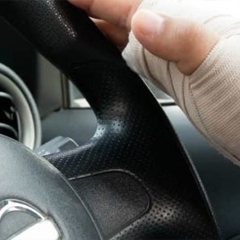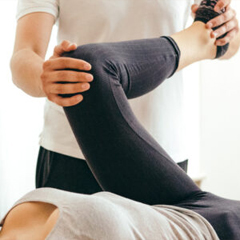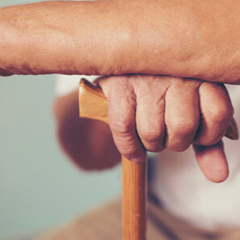Wondering about “rotator cuff surgery recovery time off work”?
Here’s the quick answer:
- Desk Jobs: 1-2 weeks
- Manual Labor Jobs: 3-4 months
Rotator cuff injuries are a common problem for many professionals, especially those who lead active lifestyles. When non-surgical treatments fail, surgical repair becomes necessary. Understanding the recovery timeline can help you plan your return to work and daily activities.
Rotator cuff surgery involves repairing torn tendons in the shoulder. Post-surgery, proper care is crucial to ensure successful recovery. While it’s normal to be eager to return to your regular schedule, rushing back can lead to setbacks.
This guide will walk you through what to expect during the recovery period, from immediate post-surgery care to the timeline for returning to work, whether you have a desk job or a more physically demanding role.

Understanding Rotator Cuff Surgery
A rotator cuff tear can be a painful and debilitating injury, often requiring surgical intervention for full recovery. The rotator cuff is a group of four muscles and their tendons that stabilize the shoulder joint and enable arm movement. These muscles include the subscapularis, supraspinatus, infraspinatus, and teres minor.
What Causes a Rotator Cuff Tear?
Rotator cuff tears are commonly caused by:
- Ageing and wear and tear: Over time, the tendons can weaken and fray.
- Injuries: Falls or heavy lifting can cause acute tears.
- Repetitive motions: Activities like painting or playing tennis can lead to overuse injuries.
Symptoms of a Rotator Cuff Tear
Symptoms often include:
- Shoulder pain: Especially at night or when lifting the arm.
- Weakness: Difficulty lifting or rotating the arm.
- Limited movement: Reduced range of motion in the shoulder.
Surgical Repair of the Rotator Cuff
When non-surgical treatments like physiotherapy and pain relief fail, surgical repair is often recommended. The surgery typically involves reattaching the torn tendon to the bone.
Here’s a quick overview of the surgical process:
- Anesthesia: General anesthesia is used, and a nerve block may be administered to numb the shoulder.
- Incisions: Small incisions are made for the arthroscopic camera and surgical tools.
- Repair: The surgeon reattaches the torn tendon, repairs any damaged muscles, and removes bone spurs if necessary.
- Closure: The incisions are closed, and a sterile dressing is applied.
Post-Surgery Care
After surgery, you’ll need to follow specific care instructions to ensure proper healing:
- Sling usage: To immobilize the shoulder and protect the repair.
- Pain management: Medications and nerve blocks can help manage pain.
- Incision care: Keep the area clean and dry to prevent infection.
- Swelling and bruising: These are normal and should subside in a few days.
Timeline for Recovery
Recovery from rotator cuff surgery is a gradual process. Here’s what you can expect:
- First 6 weeks: Focus on pain reduction and tissue healing with passive exercises.
- Weeks 7-14: Gradual return to active movements and functional range of motion exercises.
- Weeks 15-22: Strength-building exercises and return to daily activities.
Note: Full recovery can take up to 6 months, depending on the severity of the tear and your adherence to rehabilitation protocols.

Understanding the complexities of rotator cuff surgery and recovery can help you manage your expectations and plan your return to work and daily activities effectively.
Next, let’s dive into what to expect during the immediate post-surgery care period.
Immediate Post-Surgery Care
After rotator cuff surgery, immediate post-surgery care is crucial for a successful recovery. Here’s what you need to know:
Sling Usage
Your shoulder will need to be immobilized to allow the repaired tendons to heal properly. A sling is typically used for the first 4-6 weeks.
- Always wear the sling while walking or standing.
- You can loosen the sling when sitting or lying down, but avoid removing it completely.
- Remove the sling only for prescribed exercises or to shower.
Pain Management
Pain is a common part of the recovery process, but it can be managed effectively.
- Medications: Your doctor will prescribe pain medications. Take them as directed.
- Ice Therapy: Apply ice packs to the shoulder for 10-20 minutes every 1-2 hours to reduce swelling and pain. Use a thin cloth between the ice and your skin.
- Nerve Blocks: Sometimes used during surgery to help manage pain post-operatively.

Incision Care
Proper incision care is essential to prevent infection and ensure healing.
- Keep the incision clean and dry.
- For arthroscopic surgery: You can remove the bandage 24-48 hours post-surgery.
- For open surgery: Do not remove the bandage until your doctor advises.
- Avoid soaking the incision in water until it’s fully healed.
Swelling and Bruising
Swelling and bruising are normal and should subside within a few days.
- Lift your arm: This can help reduce swelling.
- Ice packs: As mentioned, these are effective for managing swelling.
- Compression: Your doctor may recommend compressive garments or bandages.
Monitoring for Complications
Watch for signs of complications and contact your doctor if you notice any of the following:
- Persistent pain or discomfort that doesn’t improve with rest or medication.
- Swelling that doesn’t decrease.
- Redness or warmth around the surgical site.
- Fever over 100.4°F (38°C).
- Drainage from the incision site.
By following these guidelines, you can ensure a smoother recovery process and reduce the risk of complications. Next, we’ll discuss rotator cuff surgery recovery time off work and what you can expect when returning to your job.
Rotator Cuff Surgery Recovery Time Off Work
Everyone’s recovery timeline from rotator cuff surgery is different, but here’s a general idea of what you can expect based on the type of job you have.
Desk Jobs
If your job involves mostly sedentary work, like typing or answering phone calls, you might be able to return to work sooner than those with more physically demanding roles.
- Timeline: Typically, you can expect to return to a desk job within 1-2 weeks after surgery.
- Activities: You should be able to perform tasks such as typing, making phone calls, and attending meetings.
- Considerations: Ensure your workstation setup is ergonomic to avoid straining your shoulder. You might need to take frequent short breaks to prevent stiffness.
Manual Labor Jobs
For those with jobs that require heavy lifting or other physical tasks, the recovery timeline is longer.
- Timeline: Returning to manual labor can take anywhere from 3-4 months post-surgery.
- Activities: This includes jobs that involve lifting, carrying, or moving objects, as well as repetitive arm movements.
- Light Duty: Some individuals may return to light duty work earlier, around 3-6 months, depending on their progress in physical therapy.
- Gradual Return: A gradual return to full duties is often recommended to avoid re-injury. Start with lighter tasks and slowly increase the workload as your shoulder gains strength.
Light Duty
In some cases, your employer might offer light duty options that can help you transition back to work gradually.
- Timeline: Light duty work can often be resumed within 6-8 weeks.
- Activities: Tasks that do not involve heavy lifting or strenuous activities but still keep you engaged at work.
- Benefits: This can help maintain your income and keep you involved with your team while you continue to recover.
Heavy Lifting
Jobs that require heavy lifting pose a higher risk of re-injury if resumed too soon.
- Timeline: Full clearance for heavy lifting usually comes 6-10 months after surgery.
- Considerations: Follow your physical therapist’s recommendations closely to ensure your shoulder is strong enough to handle the demands of your job.
By understanding these timelines and following your surgeon’s advice, you can plan your return to work in a way that supports your recovery and minimizes the risk of complications. Next, let’s explore the importance of rehabilitation and physical therapy in your recovery journey.
Rehabilitation and Physical Therapy
Rehabilitation and physical therapy are critical to your recovery after rotator cuff surgery. They help you regain shoulder strength, improve range of motion, and reduce pain. Here’s what you can expect during each phase of your rehab journey.
Phase 1: 0-4 Weeks
Goals:
- Reduce pain
- Protect the surgical repair
- Optimize tissue healing
- Maintain range of motion
- Minimize muscle inhibition
During the first four weeks, your focus will be on passive exercises. Passive exercises mean your physical therapist will move your arm for you to prevent stiffness and promote healing. You’ll also learn how to support your arm while moving it to shoulder height (90 degrees) and rotating it outwards to 20 degrees.
- Sling Usage: You’ll wear a sling to keep your arm immobile and protect the repaired tendon. Only take it off for exercises.
- Pain Reduction: Pain management is crucial. Your therapist will guide you on how to manage pain through medication and gentle movements.
- Tissue Healing: Passive movements help the tissue heal without putting stress on the repaired tendon.
Phase 2: 4-8 Weeks
Goals:
- Discard the sling
- Preserve the integrity of the repair
- Restore functional range of motion
- Re-educate muscle recruitment and scapular control
- Improve sensorimotor function
In this phase, you’ll start active exercises—using your muscles to move your shoulder. Your therapist might introduce you to hydrotherapy, where you perform exercises in water to reduce stress on your shoulder.
- Sling Removal: By the end of this phase, you should be able to stop using the sling.
- Active Movements: Begin moving your shoulder actively to regain strength and function.
- Hydrotherapy: Water exercises can be very beneficial at this stage, providing resistance without putting too much strain on your shoulder.
- Functional Range of Motion: Work towards achieving full elevation and better control of your shoulder movements.
Phase 3: 8 Weeks Onwards
Goals:
- Restore full range of motion
- Establish optimal neuromuscular control
- Improve shoulder girdle strength
- Optimize functional power, strength, and endurance
- Return to daily activities, work, sports, and recreational activities
By this phase, your tendon is strong enough to handle more demanding exercises. You’ll work on achieving full active movement and building shoulder strength.
- Full Range of Motion: Focus on exercises that allow your shoulder to move freely in all directions.
- Strength Exercises: Incorporate more challenging strength-building exercises to improve your shoulder’s power and endurance.
- Daily Activities: Gradually return to your usual daily activities, ensuring you don’t overdo it.
- Sport-Specific Training: If you’re an athlete, this is the time to start training specific to your sport.
By understanding and following these phases, you’ll maximize your recovery and reduce the risk of re-injury. Up next, we’ll dive into the long-term recovery process and how to maintain your shoulder health.
Long-Term Recovery and Maintenance
Long-term recovery after rotator cuff surgery is a marathon, not a sprint. It typically spans 4-6 months and involves several key elements to ensure you regain full strength, endurance, and functionality in your shoulder. Here’s what to expect during this period:
Full Recovery Timeline
Most patients achieve full recovery within 4-6 months. However, this timeline can vary based on the severity of the tear, your overall health, and how diligently you follow your rehabilitation program. Recovery is not just about healing the tendon but also about rebuilding muscle strength and joint stability.
Strength and Endurance
Strength and endurance are crucial for a successful recovery. After the initial phases of passive and active exercises, you’ll transition to more intense strength training. This helps rebuild the muscles around your shoulder, ensuring they can support the repaired tendon.
- Strength Exercises: Focus on exercises like resistance band workouts and light weightlifting to build muscle strength gradually.
- Endurance Training: Incorporate endurance exercises such as swimming or cycling to improve your overall stamina and shoulder endurance.
Avoiding Re-Injury
Avoiding re-injury is paramount. The first 24 weeks post-surgery are critical, as the risk of re-tearing the tendon is highest during this period. Here are a few tips to prevent re-injury:
- Follow Your PT Program: Stick to the exercises and guidelines provided by your physical therapist.
- Avoid Heavy Lifting: Refrain from lifting heavy objects until your doctor gives you the green light.
- Listen to Your Body: If you experience pain or discomfort, stop the activity and consult your healthcare provider.
Return to Normal Activities
Gradually returning to your normal activities is essential for a smooth recovery. By the end of the 6-month period, most patients can resume daily activities, work, and even sports.
- Daily Activities: You should be able to perform routine tasks like cooking, cleaning, and dressing without discomfort.
- Work: Depending on your job, you may return to full duties. Desk jobs might allow for an earlier return, while manual labor jobs may require the full 6 months.
- Sports and Recreation: Athletes can start sport-specific training, but it’s crucial to ease back into it to avoid overloading the shoulder.
By committing to your long-term recovery plan, you’ll not only regain shoulder function but also improve your overall quality of life. Up next, we’ll address some frequently asked questions about rotator cuff surgery recovery time off work.
Frequently Asked Questions about Rotator Cuff Surgery Recovery Time Off Work
How long do you need off work after rotator cuff surgery?
The amount of time you need off work after rotator cuff surgery depends largely on the type of work you do. For desk jobs or other sedentary work, you might be able to return to work within 6 to 8 weeks. This is because these jobs generally involve tasks like typing and answering phone calls, which are less strenuous on the shoulder.
However, if your job involves manual labor or heavy lifting, expect a longer recovery period. It can take 3 to 4 months or even longer before you can return to full duties. The risk of re-tearing the tendons is highest within the first 24 weeks post-surgery, so it’s crucial to follow your physical therapy regimen and avoid overloading your shoulder.
How long are you immobilized after rotator cuff surgery?
After rotator cuff surgery, your arm will usually be immobilized in a sling for 3 to 4 weeks. This is to ensure that the tendon heals properly by keeping your shoulder as still as possible. Some patients may use an abduction sling, which positions the arm away from the body, providing additional support and reducing tension on the repaired tendon.
During this period, it’s important to avoid using your arm for any activities that could strain the tendon. Your doctor will provide specific guidelines on when to start passive exercises to gradually improve your range of motion.
How long can you not drive after rotator cuff surgery?
Driving after rotator cuff surgery is generally not recommended until you can safely operate a vehicle without risking your recovery or endangering yourself and others. For most patients, this means waiting at least 6 weeks before getting behind the wheel.
Several factors influence this timeline:
- Arm Movement: You need to have enough strength and mobility in your shoulder to control the steering wheel safely.
- Medication Effects: Pain medications can impair your ability to drive, so you should be off these medications before resuming driving.
- Safety: Always prioritize safety. If you’re still experiencing pain or limited motion, it’s best to wait until you have more control over your arm movements.
Each patient’s recovery is unique, so consult your doctor to get personalized advice on when it’s safe for you to drive again.
By understanding these timelines and following your doctor’s recommendations, you can ensure a smoother and safer return to work and daily activities after rotator cuff surgery.
Conclusion
At Ventura Orthopedics, we are committed to providing comprehensive care and exceptional service to our patients. Our team of skilled orthopedic surgeons and dedicated staff work tirelessly to ensure that every patient receives the best possible treatment and support throughout their recovery journey.
We understand that undergoing rotator cuff surgery and the subsequent recovery period can be challenging. That’s why we offer personalized treatment plans custom to your specific needs and lifestyle. By focusing on your individual goals and circumstances, we aim to help you return to your daily activities as quickly and safely as possible.
Our commitment to patient care extends beyond the surgical procedure. We provide continuous support through every phase of your rehabilitation, ensuring that you have the resources and guidance needed to regain strength and mobility in your shoulder. Whether you have questions about managing pain, performing rehab exercises, or knowing when it’s safe to return to work, our team is here to help.
For more information on rotator cuff surgery and to schedule a consultation with one of our specialists, visit our shoulder provider page.
At Ventura Orthopedics, your health and well-being are our top priorities. We are dedicated to helping you achieve the best possible outcomes and get back to the activities you love. Thank you for trusting us with your care.















